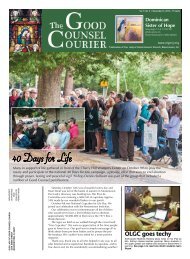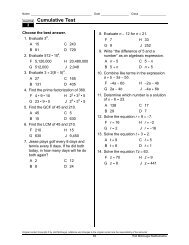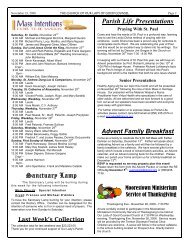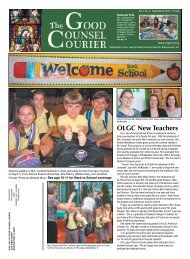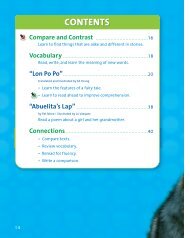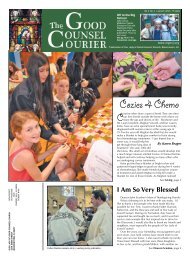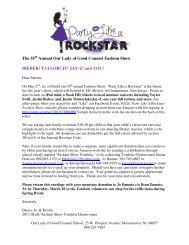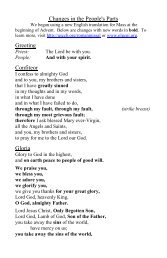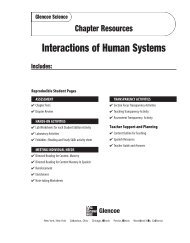Chapter 15 Resource: Support, Movement, and Responses
Chapter 15 Resource: Support, Movement, and Responses
Chapter 15 Resource: Support, Movement, and Responses
- No tags were found...
You also want an ePaper? Increase the reach of your titles
YUMPU automatically turns print PDFs into web optimized ePapers that Google loves.
Name Date ClassDirected Reading forContent MasteryOverview<strong>Support</strong>, <strong>Movement</strong>, <strong>and</strong> <strong>Responses</strong>Directions: Use the words below to fill in the blanks beneath the illustrations of joints.gliding neck kneepivot hinge vertebrae1. type: ______________ 3. type: ______________ 5. type: __________________________________ ____________________ ____________________2. example: ___________ 4. example: ___________ 6. example: _______________________________ ____________________ ____________________Meeting Individual NeedsCopyright © Glencoe/McGraw-Hill, a division of the McGraw-Hill Companies, Inc.Directions: Complete the following sentences using the terms listed below.skin skeletal protection tendonsdendrites axons synapse7. Muscles that move bones are called ____________________ muscles.These kinds of muscles are attached to bones by thick b<strong>and</strong>s of tissuecalled ____________________.8. Your ____________________ is the largest organ in your body. Its mostimportant function is ____________________.9. Nerve cell branches called _____________ send impulses to the cell body.Branches called __________________ send impulses away from the cell body.10. Impulses move from neuron to neuron across a ____________________.<strong>Support</strong>, <strong>Movement</strong>, <strong>and</strong> <strong>Responses</strong> 19



